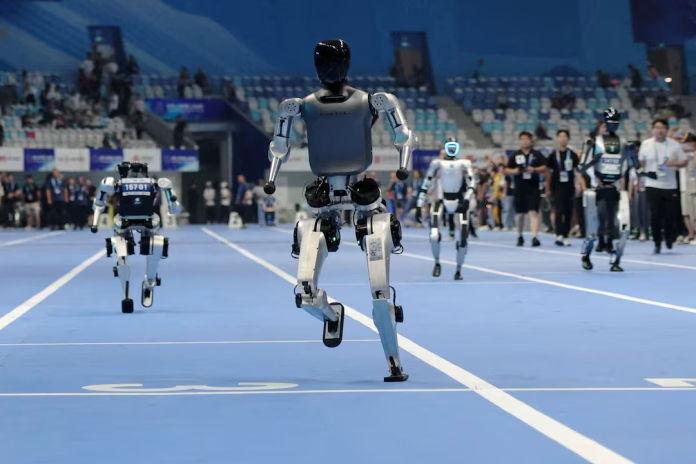The first World Humanoid Robot Games have begun in Beijing. More than 500 humanoid robots from 280 teams across 16 countries, including the United States, Germany, and Japan, are competing. Sports include soccer, running, and boxing.
Opening ceremony and demonstrations
Each robot is controlled by a human team. They are tested on agility and skill across 26 events, including gymnastics, track and field, and martial arts.
The opening ceremony on Thursday evening featured robots performing hip-hop dances, martial arts demonstrations, and playing instruments such as keyboard, guitar, and drums. The event highlights China’s focus on developing AI-powered humanoid robots.
During the ceremony, the robots played soccer and boxed in front of cheering spectators. One robot scored a goal after a few attempts, causing the goalkeeper to topple over. Another robot fell but stood up without help.
Some robots also modelled clothing alongside humans. One robot fell and had to be carried off the stage by two human models.
Purpose and background of the games
A government official told People’s Daily that each robot “is creating history” at the three-day event, which ends on Sunday.
Organisers described the tournament as “an international platform integrating technological competition, economic promotion, and international exchange.” A joint statement from the Beijing Municipal People’s Government, China Central Radio and Television, the World Robotics Cooperation Organization, and the Robocup Asia-Pacific International Council said the event aims to integrate robots into daily life, support economic and social development, and promote collaboration across science, technology, sports, and culture.
The games follow a robot half-marathon held in Beijing earlier this year. Bipedal robots of different makes and sizes completed a 21.1-kilometre course with human operators guiding them. Separate lanes kept robots and human runners apart.
The robots followed modified rules, including battery replacement stops. Teams could swap in substitute robots, but each swap added 10 minutes to the final time. Many robots fell or needed assistance, and one collided with a railing, knocking over its operator.
The Sky Project Ultra robot, also called Tien Kung Ultra, finished fastest among the humanoid competitors. It completed the course in two hours and 40 minutes.
